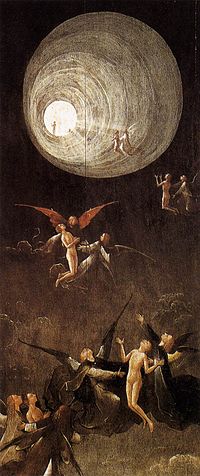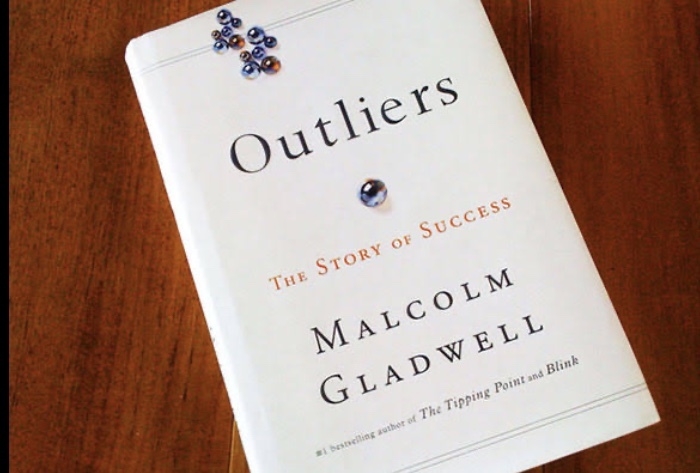Trải nghiệm cận tử

Trải nghiệm cận tử (tiếng Anh: near-death experience) là một trải nghiệm được kể lại bởi một người suýt chết hoặc đã bị chết lâm sàng và được cứu sống. Một số nhà khoa học tin rằng trải nghiệm này có thể được giải thích bằng các ảo giác do bộ não đang chết dần tạo ra. Tuy nhiên, mô hình này bị phản bác ngày càng mạnh bởi các nghiên cứu thực hiện tại Hà Lan và các nơi khác (van Lommel, 2004). Trải nghiệm này phổ biến một cách đáng ngạc nhiên, đặc biệt từ khi có các kĩ thuật hô hấp nhân tạo. Theo kết quả điều tra của tổ chức Gallup, có khoảng 8 triệu người Mỹ khẳng định đã trải qua kinh nghiệm cận tử (Mauro, 1992). Kinh nghiệm này thường bao gồm cả sự thoát xác (out-of-body experience).
Hiện tượng học của trải nghiệm cận tử
[sửa | sửa mã nguồn]Hiện tượng học của một kinh nghiệm cận tử thường bao gồm các phạm trù sinh lý học, tâm lý học và siêu việt (Parnia, Waller, Yeates & Fenwick, 2001) chẳng hạn như các ấn tượng chủ quan về việc ở bên ngoài cơ thể vật lý (trải nghiệm thoát xác), sự siêu việt của bản ngã có thể vượt qua các ranh giới không gian và thời gian, và các kinh nghiệm siêu việt khác (Lukoff, Lu & Turner, 1998; Greyson, 2003).
Thông thường, trải nghiệm phát triển theo một tiến trình xác định (Mauro, 1992; Morse, Conner & Tyler, 1985; Morse & Perry, 1992; van Lommel et.al, 2001), tóm tắt như sau:
- Một cảm giác bị chết hoặc mất đi ý thức
- Một trải nghiệm thoát xác. Cảm giác trôi bồng bềnh ở phía trên cơ thể của mình và nhìn thấy khu vực xung quanh.
- Cảm xúc dễ chịu, tĩnh tại. Cảm giác tràn đầy tình yêu và bình yên.
- Cảm giác chuyển động lên cao qua một đường ống hẹp.
- Gặp gỡ những người thân đã khuất hay các nhân vật tâm linh.
- Gặp một thực thể ánh sáng hay một luồng ánh sáng (có thể là một nhân vật thần thánh hay tôn giáo).
- Được hồi tưởng lại cả cuộc đời (life review).
- Tiến đến một ranh giới.
- Một cảm giác đang quay trở lại với thể xác, thường kèm theo sự do dự không muốn quay lại.
Một trải nghiệm cận tử ở mức độ cao phản ánh sự bình yên, niềm vui và sự hài hòa, tiếp theo là sự thấu hiểu và các trải nghiệm tôn giáo hay thần bí (Lange, Greyson & Houran, 2004). Những kinh nghiệm cận tử ở mức độ cao nhất bao gồm cả một sự nhận thức về những sự kiện xảy ra tại một nơi chốn hoặc thời điểm khác. Trong số các trường hợp chết lâm sàng mà được coi là dẫn đến một kinh nghiệm cận tử, người ta tìm thấy các nhân tố như: ngừng tim (cardiac arrest), sốc do mất máu sau khi sinh nở hoặc khi biến chứng phẫu thuật, sốc do nhiễm trùng hoặc do quá mẫn cảm, tử hình bằng điện, hôn mê, xuất huyết não (intracerebral haemorrhage) hoặc tắc mạch máu não (cerebral infarction), tự tử, suýt chết đuối hoặc ngạt thở, ngừng thở, trầm cảm nghiêm trọng (van Lommel et al., 2001).
Xem thêm
[sửa | sửa mã nguồn]Tham khảo
[sửa | sửa mã nguồn]- American Psychiatric Association (1994) Diagnostic and Statistical Manual of Mental Disorders, fourth edition. Washington, D.C.: American Psychiatric Association (Code V62.89, Religious or Spiritual Problem).
- Blackmore, Susan (1993) Dying to live: Science and Near-Death Experiences. London: Harper Collins.
- Blanke, Olaf; Ortigue, Stéphanie; Landis, Theodor; Seeck, Margitta (2002) Stimulating illusory own-body perceptions. The part of the brain that can induce out-of-body experiences has been located. Nature, Vol. 419, 19 September, 2002
- Britton WB & Bootzin RR. (2004) Near-death experiences and the temporal lobe. Psychol Sci. Apr;15(4):254-8. PubMed abstract PMID 15043643
- Engmann, B. (2014) Near-Death Experiences. Heavenly Insight or Human Illusion? Springer International Publishing. ISBN 978-3-319-03727-1
- Greyson, B. (1983) The Near-Death Experience Scale: Construction, reliability, and validity. Journal of Nervous and Mental Disease, 171, 369-375.
- Greyson B. (1997) The near-death experience as a focus of clinical attention. Journal of Nervous and Mental Disease. May;185(5):327-34. PubMed abstract PMID 9171810
- Greyson, B. (2000) Some neuropsychological correlates of the physio-kundalini syndrome. Journal of Transpersonal Psychology, 32, 123-134.
- Greyson, Bruce (2003) Near-Death Experiences in a Psychiatric Outpatient Clinic Population. Psychiatric Services, December, Vol. 54 No. 12. The American Psychiatric Association
- Greyson, Bruce & Bush, Nancy E. (1992) Distressing near-death experiences. Psychiatry, Feb;55(1):95-110.
- Jansen, Karl L. R. (1995) Using ketamine to induce the near-death experience: mechanism of action and therapeutic potential. Yearbook for Ethnomedicine and the Study of Consciousness (Jahrbuch furr Ethnomedizin und Bewubtseinsforschung) Issue 4 pp55–81.
- Jansen, Karl L. R. (1997) The Ketamine Model of the Near Death Experience: A central role for the NMDA Receptor. Journal of Near-Death Studies Vol. 16, No.1
- Kelly EW. (2001) Near-death experiences with reports of meeting deceased people. Death Stud. Apr-May;25(3):229-49
- Lange R, Greyson B, Houran J. (2004) A Rasch scaling validation of a 'core' near-death experience. British Journal of Psychology, Volume: 95 Part: 2 Page: 161-177
- Lukoff, David, Lu, Francis G. & Turner, Robert P. (1998) From Spiritual Emergency to Spiritual Problem - The Transpersonal Roots of the New DSM-IV Category. Journal of Humanistic Psychology, 38(2), 21-50
- Martens PR. (1994) Near-death-experiences in out-of-hospital cardiac arrest survivors. Meaningful phenomena or just fantasy of death? Resuscitation. Mar;27(2):171-5. PubMed abstract PMID 8029538
- Mauro, James (1992) Bright lights, big mystery. Psychology Today, tháng 7 năm 1992
- Morse M., Conner D. and Tyler D. (1985) Near-Death Experiences in a pediatric population. A preliminary report, American Journal of Disease of Children, n. 139 PubMed abstract PMID 4003364
- Morse, Melvin (1990) Closer to the Light: Learning From the Near-Death Experiences of Children. New York: Villard books
- Morse, Melvin & Perry, Paul (1992) Transformed by the Light. New York: Villard books
- Moody, R. (1975) Life After Life: The Investigation of a Phenomenon - Survival of Bodily Death. New York: Bantam
- Moody, R. (1977) Reflections on Life After Life: More Important Discoveries In The Ongoing Investigation Of Survival Of Life After Bodily Death. New York: Bantam
- Moody, R. (1999) The Last Laugh: A New Philosophy of Near-Death Experiences, Apparitions, and the Paranormal. Hampton Roads Publishing Company
- Mullens, K. (1992) Returned From The Other Side. Publ. Kenneth G. Mullens
- Mullens, K. (1995) Visions From The Other Side. Publ. Kenneth G. Mullens
- Orne RM. (1995) The meaning of survival: the early aftermath of a near-death experience. Research in Nursing & Health. 1995 Jun;18(3):239-47. PubMed abstract PMID 7754094
- Parnia S, Waller DG, Yeates R, Fenwick P (2001) A qualitative and quantitative study of the incidence, features and aetiology of near death experiences in cardiac arrest survivors. Resuscitation. Feb;48(2):149-56. PubMed abstract PMID 11426476
- Peake, Anthony (2006) "Is There Life After Death?" (Chartwell Books in USA & Arcturus in UK)
- Pinchbeck, Daniel (2002) Breaking Open the Head: A Psychedelic Journey into the Heart of Contemporary Shamanism. Broadway Books, trade paperback, 322 pages
- Pravda (2004) Reanimators try to grasp the afterlife mystery. Pravda article 21.12.2004. (Article translated by: Maria Gousseva)
- Pritchard, Mark H. (2006) Near Death Experiences, Absolute Publishing Group
- Raaby et al. (2005) Beyond the Deathbed.
- Ring K. (1980) Life at death. A scientific investigation of the near- death experience. New York: Coward McCann and Geoghenan
- Rivas T. (2003). The Survivalist Interpretation of Recent Studies into the Near-Death Experience Lưu trữ 2006-08-15 tại Wayback Machine. Journal of Religion and Psychical Research, 26, 1, 27-31.
- Rodrigues, Linda Andrade (2004) Ex-atheist describes near-death experience. Standard Times, Page C4, 31 tháng 1 năm 2004
- Sabom, Michael (1998) Light & Death: One Doctor's Fascinating Account of Near-Death Experiences. Grand Rapids, Michigan: Zondervan Publishing House
- Simpson SM. (2001) Near death experience: a concept analysis as applied to nursing. Journal of Advanced Nursing. Nov;36(4):520-6. PubMed abstract PMID 11703546
- Rick Strassman, DMT: The Spirit Molecule: A Doctor's Revolutionary Research into the Biology of Near-Death và Mystical Experiences, 320 pages, Park Street Press, 2001, ISBN 0-89281-927-8
- Thomas, Shawn (2004) Agmatine and Near-Death Experiences. Article published at www.neurotransmitter.net
- van Lommel P, van Wees R, Meyers V, Elfferich I. (2001) Near-Death Experience in Survivors of Cardiac Arrest: A prospective Study in the Netherlands. Lancet, Dec 15;358(9298):2039-45.
![[Review Sách] Cô thành trong gương](https://images.spiderum.com/sp-images/03619a10619a11eea9f7afd27b1edd4c.jpeg) GIẢM
9%
GIẢM
9%
 GIẢM
31%
GIẢM
31%
![[Review sách] Normal people - Sally Rooney](https://down-bs-vn.img.susercontent.com/sg-11134201-22090-edroebrkpwhvaf.webp) GIẢM
16%
GIẢM
16%
 GIẢM
10%
GIẢM
10%
 GIẢM
33%
GIẢM
33%
 GIẢM
12%
GIẢM
12%



